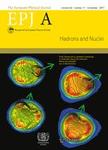版权所有:内蒙古大学图书馆 技术提供:维普资讯• 智图
内蒙古自治区呼和浩特市赛罕区大学西街235号 邮编: 010021
T=题名(书名、题名),A=作者(责任者),K=主题词,P=出版物名称,PU=出版社名称,O=机构(作者单位、学位授予单位、专利申请人),L=中图分类号,C=学科分类号,U=全部字段,Y=年(出版发行年、学位年度、标准发布年)
AND代表“并且”;OR代表“或者”;NOT代表“不包含”;(注意必须大写,运算符两边需空一格)
范例一:(K=图书馆学 OR K=情报学) AND A=范并思 AND Y=1982-2016
范例二:P=计算机应用与软件 AND (U=C++ OR U=Basic) NOT K=Visual AND Y=2011-2016





Redox flow battery (RFB) is a promising candidate of large-scale stationary energy storage which is necessary to utilize renewable energy. For RFBs, the capability to easily increase the capacity by enlarging the electrolyte tank, high charge-discharge cycle performance, and wide flexibility to high- and low-frequency fluctuations are highly advantageous.
Nowadays vanadium RFBs are used for practical use, but the material cost of vanadium is problematic to further spread them. An alternative candidate for commercial use is titanium-manganese (Ti-Mn) RFBs [1] whose material cost should be lower. On the other hand, the stability of the electrolyte for positive electrode (catholyte) need to be improved, because precipitates are created by a charge disproportionation reaction of Mn ions in the charged catholyte [2]. The formation of precipitates decreases the energy density and degrades the cyclability. To improve the characteristics, the chemical state and redox reaction of the electrolytes of Ti-Mn RFBs should be clarified by precise analyses.
We performed synchrotron radiation X-ray absorption spectroscopy (XAS) for the electrolytes of a Ti-Mn RFB to directly observe the redox reaction [3]. In this study, the same Ti-Mn RFB electrolyte was used for both positive and negative electrodes. The Ti K-edge XAS of the electrolyte for negative electrode (anolyte) revealed gradual reduction reaction of Ti from Ti4+ on the charge process. The Ti L2,3-edge XAS spectrum for the anolyte at state of charge (SOC) of 80% was mostly attributed to Ti3+ state. The results for Ti are consistent with electrochemical views in previous reports [2]. The Mn K-edge XAS of the catholyte gradually shifted to higher energy-side up to SOC of 50%, indicating a slight oxidation reaction of Mn from Mn2+. However, the Mn L2,3-edge XAS spectrum for the catholyte solution at SOC of 80% was of Mn2+<

Transition-metal-based solid-state electrocatalysts undergo dynamic phase transformation governed by the local electrochemical environment during operation, e.g., oxygen evolution/reduction(1,2), hydrogen evolution(3), and carbon dioxide reduction(4). Electrochemical active species, often hidden before operation, can become evolved due to the applied electrochemical potential and/or surrounding chemicals. These species are stabilized under the local environment dynamically generated by the reaction product, e.g., proton (H+) or hydroxyl (OH-) group(5,6).
Active species often account for a small fraction (i.e., minor motif) of the entire catalyst volume, and the nanoscale morphology and chemical composition of the electrocatalyst are inhomogeneous and continuously change during the electrochemical reaction. Thus, capturing the active species remains a major challenge. Spatiotemporal observation of the structural/chemical changes of the electrocatalyst and the correlation with the local electrochemical environment may reveal the active species and elucidate the governing step toward their formation. Furthermore, identification of the key intermediate step of catalyst phase transformation allows the redirection of low- to high-active catalysts; however, this remains challenging.
During electrochemical CO2 reduction (ECR), (hydr)oxide-derived Cu electrocatalysts experience significant phase transformation and show high activity and selectivity for carbon dimerization (C–C coupling)(7,8,9). The location and chemical composition of the active species evolving during electrochemical phase transformation may be strongly heterogeneous; however, these species have not been clearly determined. Recent studies have employed operando characterization techniques, e.g., fluorescence hard/soft X-ray(4,10), X-ray photoelectron(11), and Raman spectroscopy(6), to elucidate the act
电话和邮箱必须正确填写,我们会与您联系确认。
版权所有:内蒙古大学图书馆 技术提供:维普资讯• 智图
内蒙古自治区呼和浩特市赛罕区大学西街235号 邮编: 010021

暂无评论